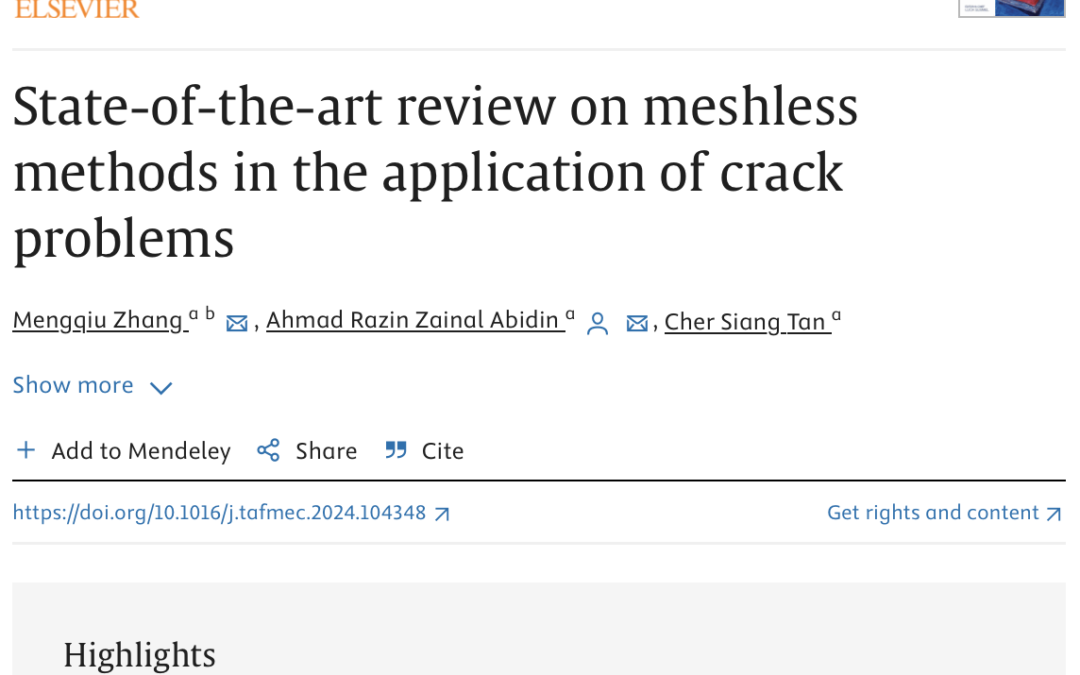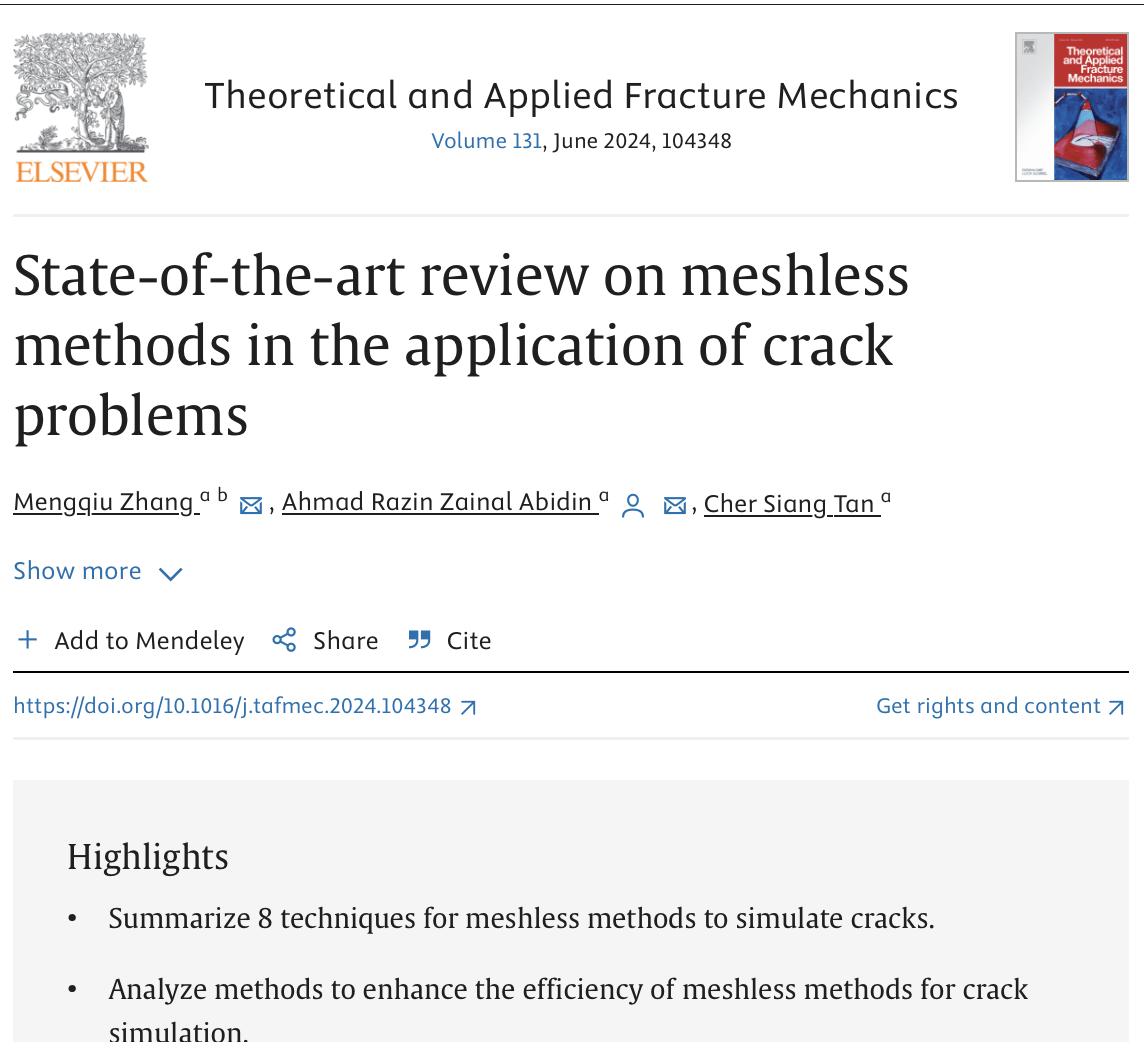Abstract:
Meshless or meshfree methods (MMs) are practical and excellent numerical techniques for solving crack problems. With the inherent limitations of mesh-based methods such as the finite element method (FEM) in modeling cracks, MMs have captivated the attention of researchers worldwide because of their conspicuous merits, including mesh independence and higher-order continuity. However, the most recent review literature on MMs in crack problems is only available until 2018, and no relevant analyses have been reported in detail since then. To fill this gap, this state-of-the-art review explores the novel potential and advancements of MMs in crack problems. Generally, eight approaches are implemented with MMs to reproduce crack behaviors. To improve efficiency and stability, the existing strategies are explored in terms of numerical integration, method coupling, and adaptive analysis. Based on these techniques, 82 highly cited and influential articles are analyzed to determine the specific MMs, simulation techniques, and the enhanced strategies that have been adopted. According to existing studies, various novel MMs have been proposed to analyze cracks. Furthermore, flexible coupling of multiple techniques to simulate cracks can be applied to different forms of cracks in various materials. However, adaptive analysis still needs to be widely performed in the MMs for crack problems due to the absence of a solid mathematical foundation for error estimators. This paper presents the research gaps and the future prospect of MMs in the application of crack problems. It should be stated that significant works on numerical methods for modeling cracks predating 1994 are not cited in this paper, a decision considered by the authors to be non-essential to its scope and objectives.
Highlights…
- Summarize 8 techniques for meshless methods to simulate cracks.
- Analyze methods to enhance the efficiency of meshless methods for crack simulation.
- Review 222 high-cited papers in this field and focus on 82 papers from 2018–2023.
- Propose research gaps and future direction for meshless methods to model cracks.


